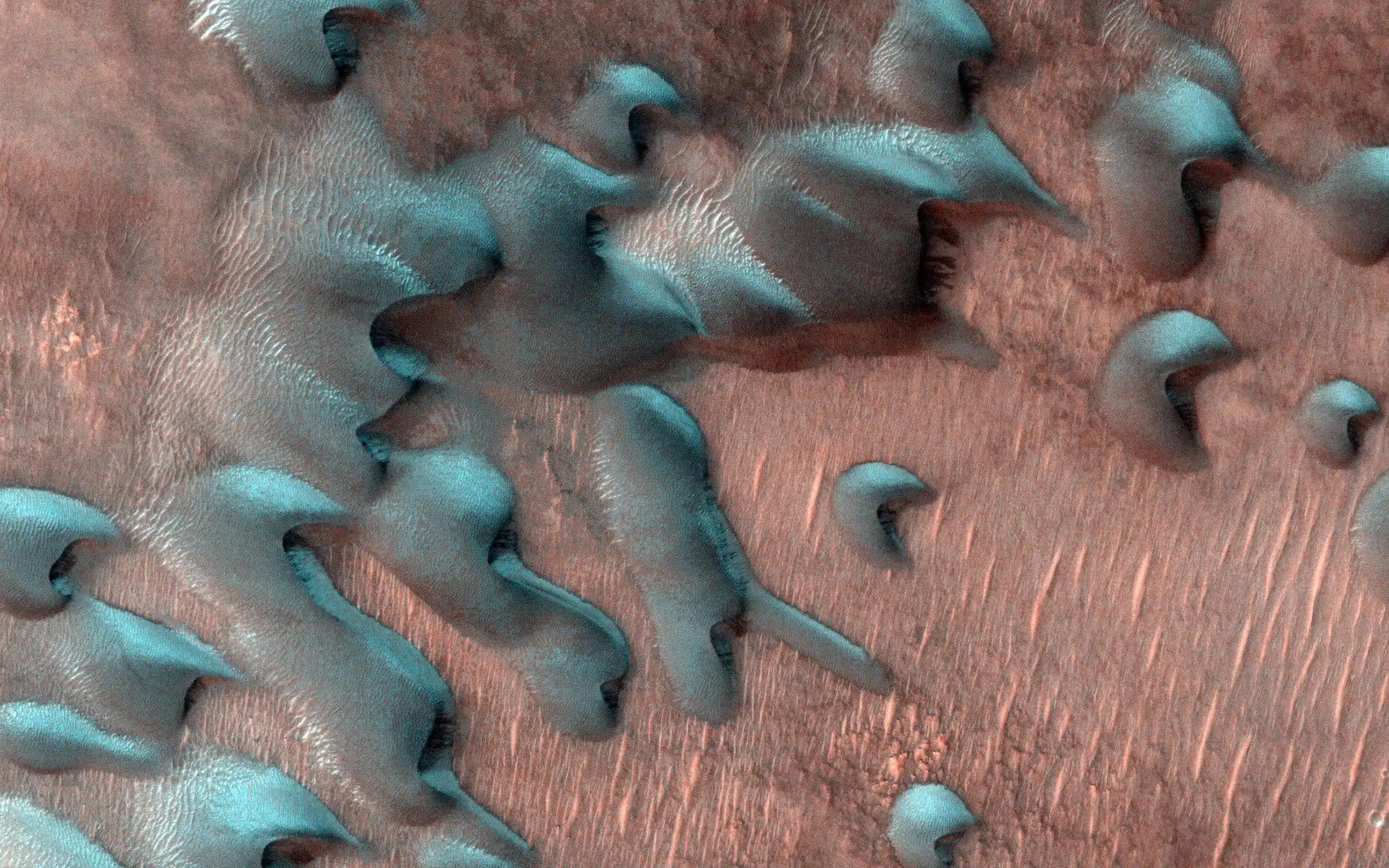
New NASA footage shows that Mars, the red planet, has been transformed from a barren wasteland into a beautiful winter wonderland in certain parts.
In the Northern Hemisphere of Mars, the Perseverance rover and the Ingenuity helicopter are inspecting an ancient river delta that flowed into Jezero Crater billions of years ago.
Dust, the primary component of Mars, controls the climate there. Winter is often signaled by dust. Snow, ice, and frost have also all been observed on this planet, however. Lows of -190 degrees Fahrenheit (-123 degrees Celsius) have been recorded at Mars’ polar regions.
A winter wonderland that's out of this world.🚀 @NASA’s Mars Reconnaissance Orbiter captured this unusual sight two days after Mars’ winter solstice in July. We've seen plenty of ice and snow in the US lately. But we must say this frost on Mars in just awesome! pic.twitter.com/FpeiYMpFlF
— EDF (@EnvDefenseFund) January 2, 2023
Two types of snow on Mars
Mars has two distinct types of snow. One kind consists of frozen water such as that found on Earth.
Traditional snow cannot fall to the ground on Mars because the thin air and low temperatures cause it to sublimate or change straight from a solid to a gas before it hits the ground.
Carbon dioxide-based snow, often known as dry ice, is another form of Martian snow that does fall and stick to the ground. Mars’ flat areas near the poles receive many feet of snowfall on average.
Martian winters produce 2 types of frosty precipitation- water ice snow & carbon dioxide (dry ice) snow.
NASA’s Mars Reconnaissance Orbiter peeks through the clouds as the dry ice snow flutters to the surface.
📸: Mars Reconnaissance Orbiter- NASA/JPL-Caltech/Univ. of Arizona pic.twitter.com/6pUOART5zP
— The Dale Etheridge Planetarium at CSN (@CSNPlanetarium) December 27, 2022
In a press release, Mars expert Sylvain Piqueux of NASA’s Jet Propulsion Laboratory in Pasadena, California, was quoted as saying, “Enough falls that you could snowshoe across it.”
“If you were looking for skiing, though, you’d have to go into a crater or cliffside, where snow could build up on a sloped surface,” he added.
Since snowfall only occurs at the poles at night under cloud cover, neither orbiters nor rovers have actually seen snowfall on the red planet. No robotic explorers have been created that can withstand the cold temperatures at the poles, and orbiter cameras can’t see through the clouds.
The Mars Climate Sounder sensor on the Mars Reconnaissance Orbiter, however, can see a light that the naked eye cannot. It has detected carbon dioxide snow descending from the Martian sky near the polar regions.
From its location roughly a thousand miles (1,609 kilometers) from the Martian north pole, the Phoenix lander, which arrived in 2008, utilized one of its laser sensors to identify snow that was a mixture of ice and water.
Mars’ snow is different from Earth’s snow
Photographs have revealed that each snowflake on Earth has six sides, making it completely unique. Snowflakes on Mars would appear to be a little different under a microscope.
“Because carbon dioxide ice has a symmetry of four, we know dry-ice snowflakes would be cube-shaped,” Piqueux said. “Thanks to the Mars Climate Sounder, we can tell these snowflakes would be smaller than the width of a human hair.”
Frosts formed from carbon dioxide and ice can appear on Mars in areas other than the planet’s poles. Frost was first detected by Viking landers in the 1970s, and the Odyssey orbiter (which joined Mars’ orbit in 2001) has witnessed it develop and transform into a gas in the sunlight.
When winter finally ends, the accumulated ice melts and converts into a gas, forming odd structures that NASA researchers have referred to as Swiss cheese, Dalmatian spots, fried eggs, spiders, and other unusual things.
Recent highs in Jezero Crater’s icy winter have averaged about eight degrees Fahrenheit (-13 degrees Celsius) while lows have hovered around -120 degrees Fahrenheit (-84 degrees Celsius).
At Gale Crater in the Southern Hemisphere near the Martian equator, the 2012 Curiosity rover has been experiencing highs of five degrees Fahrenheit (-15 degrees Celsius) and lows of -105 Fahrenheit (-76 degrees Celsius).
Due to the planet’s elliptical orbit around the sun, the Martian year is 687 days long, which is approximately two Earth years. Thus, when the spring equinox arrived on December 26th in the Northern Hemisphere, NASA scientists also welcomed in the new Martian year.
See all the latest news from Greece and the world at Greekreporter.com. Contact our newsroom to report an update or send your story, photos and videos. Follow GR on Google News and subscribe here to our daily email!



